![]()
![]()
© 2006 The Independent Fact Group
What the divers saw at the car deck of MV Estonia
ANALYSIS REPORT
| Subject: | What the divers saw at the car deck of MV Estonia |
| Type: | Analysis |
| By: | The Independent Fact Group |
| Status: | Proved |
| Date: | 2006-04-09 |
| Version: | Report - English |
The Fact Group's aims and objectives:
The Independent Fact Group was formed in early 1999 to clear up the many question marks about the M/V Estonia disaster, in a structured and methodical manner. There has been considerable speculation concerning the efforts of the Joint Accident Investigation Commission (JAIC) and the political, legal and media treatment of the accident and its tragic consequences.
The aim is to give those in authority an opportunity, based on the facts of the case, to decide to review this matter, with a view to further action. Our efforts also enable the media and the general public to decide on the basis of the objective information which is available concerning the accident, and the conclusions to be drawn from a technical and civic perspective.
The overall objective is the setting up of a new investigation of the accident which can describe the course of the accident in detail, and its causes, with subsequent assessment of the moral and legal responsibilities, where this is feasible.
We are motivated by the belief that a properly conducted investigation will contribute to maritime safety and by our concern for Sweden's reputation as a nation which upholds safety at sea and the rule of law.
Methodology:
In the course of this task, we have assumed that the solution of a problem is never better than the validity of the basic assumptions. As a result, we have stipulated some methodological principles, of which the following are the most fundamental:
1. All scenarios must be considered to be true until the contrary is
proved.
2. All observations, assumptions or statements on which a scenario
is based must be considered false until the contrary is proved.
We have defined a number of criteria for concluding that an observation, assumption or statement may be considered to be true or false, and processes and routines for the route to be taken in clarifying an observation, assumption or statement. These criteria involve technical, empirical, statistical and/or semantic requirements which, if they are relevant must all be met if the observation, assumption or statement is to be classified as an objective fact.
The materials we have worked with are primarily the documents, audio recordings and films in the Swedish Accident Investigation Commission's Estonia archive, together with supplementary information from other public sources and, in addition documentation from the Meyer shipyard and its independent commission.
Summary of this report
During the official investigation of
the MV Estonia disaster and all the aftermath regarding the JAIC Final Report
it has always been officially denied that any investigation of the car deck
was performed. This in spite of the fact that investigations of the car deck
is verified on video films, in diving log books and in documentation from the
Swedish National Maritime Administration.
There is now, after the presentation of the Estonian Governments expert investigation performed by the Chief State Prosecutor Magnus Kurm, reason to look into the facts again. Why does the Swedish authorities continue the cover up regarding the MV Estonia shipwreck?
In this report the Independent Fact Group for the first time show pictures taken on the MV Estonia car deck, pictures that without doubt show that somebody after the disaster when the ship was resting on the seabed, detonated explosives inside the actuator room where the hydraulics for the ramp and visor was situated. The pictures also show that the divers under the lead of the Swedish National Maritime Administration, Johan Franson, has seen, filmed and investigated the damage from explosions that penetrated several bulkheads at the car deck.
Background
The Chief State Prosecutor Magnus Kurm wanted to meet the divers of the company Rockwater. Therefore he asked Johan Franson, who signed the contract with the divers as a representative of Sweden, to receive a written document allowing interviews with the divers. Johan Franson refused to give such permission. In the light of this report it becomes clear and logic why. See the Kurm report, chapter 31 and 32.
The facts presented in this report has been known by the Independent Fact Group since 1999 but has by different reasons been impossible to present. The reason is that every clear evidence pointing out the Swedish and Finnish governments as running a cover up also sort the messengers in the group of conspirators.
As a result of the presentation of the Estonian expert investigations report and the Swedish refusal to give permissions to interview the divers, there is for the first time absolutely clear that the cover up also involve what was seen by the divers at the car deck of MV Estonia. With the present background involving military transports of strategic military material on board the MV Estonia, on the behalf of the Swedish Military and possibly Swedish and/or international companies, it becomes quite clear why there is an ongoing cover up of running.
In an earlier report the Independent Fact Group showed that the disaster hardly can have developed from the loss of the visor, and also that there are circumstances that point in the direction that the visor after the disaster was found directly besides the ship. The pictures that now are presented shows that demolitions involving explosions have taken place inside the ship and after the disaster. The reason for such activities can only be to get access to the car deck by loosening the visor and ramp.
The reason for such actions can of course be discussed but the Fact Group rest the case in that respect. The Fact Group however finds that those having performed such activities involving a demolition squad must at least have had the Swedish and Finnish authorities permission to continue such work. Sweden was assisting with "on the site protection" by the Swedish Navy directly after the disaster, and Finland was in charge of the complete rescue operation. The protection of the shipwreck still continues today.
The Fact Group further understand that during the activities to get access to the car deck the visor was probably detached from the ship, whereby it then became "natural" to state the loss of the visor as the main reason for the disaster. It is however not sure that every member of JAIC in fact knew the complete truth why they can have been forced to explain damage from explosions with strange lies and contradictions in their final report.
With this background the refusal from Johan Franson to assist the Estonian expert investigation seem logic as well as other strange circumstances can be seen in a new perspective.
Facts about the video film
The 3rd of December 1994 extensive underwater investigations were performed at the shipwreck of MV Estonia under the lead of the Swedish National Maritime Administration and Johan Franson. The Independent Fact Group limits this report to cover one film, "SHK B40C" and a chapter of the film with the beginning at 1.34.00 in to the film covering 7 more minutes.
The Fact Group has performed advanced editing and managed to clean the tape from distortions found on the original video tape we got from the Swedish Accident Investigation Board. We have further by special technique managed improvements of the picture and also stabilization of the video signals during playback. We have also managed to play the video in slow motion with preserved quality enabling contours hardly seen before come visual.
The video sequence does however still partially show an area that has been overexposed as a result of the light from the divers head camera being to sharp and concentrated.
Link to the video "SHK B40C" time: 1:34_(QuickTime)
Investigation of the car deck
This sequence of the video, filmed from the divers head camera, show the diver entering the car deck through the gap between the forward bulkhead and the ramp. See picture 1a and 1b below.
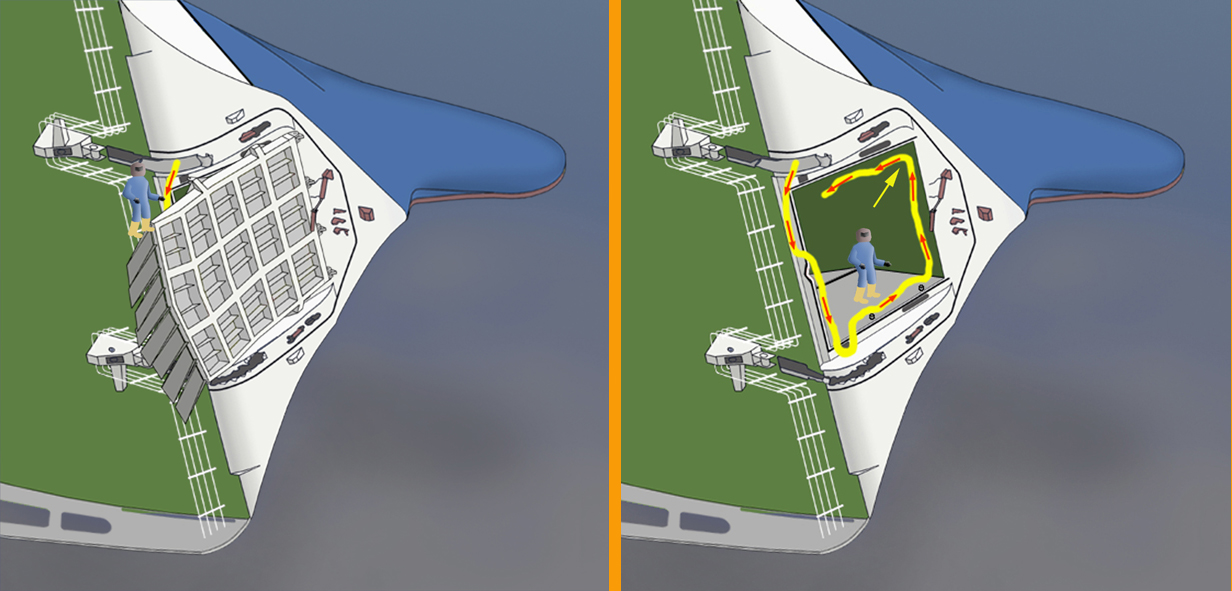
Picture 1a and 1b. The diver get access to the car deck by the gap between the ramp and the forward bulkhead, and thereafter he walks "up" to deck 2 (the car deck).
At the car deck the diver follows the flaps that normally covers the gap between the ramp and the car deck by holding on to them when swimming "up" to the port inner side of the ramp tunnel. It is of great importance to note that the flaps in normal conditions (at sea) were resting on to the car deck like illustrated by flap A, B and C below. After the disaster, when the ship was resting on the seabed half way up side down, the flaps turned away from the car deck by gravity shown in the illustration by flap D in picture 2.
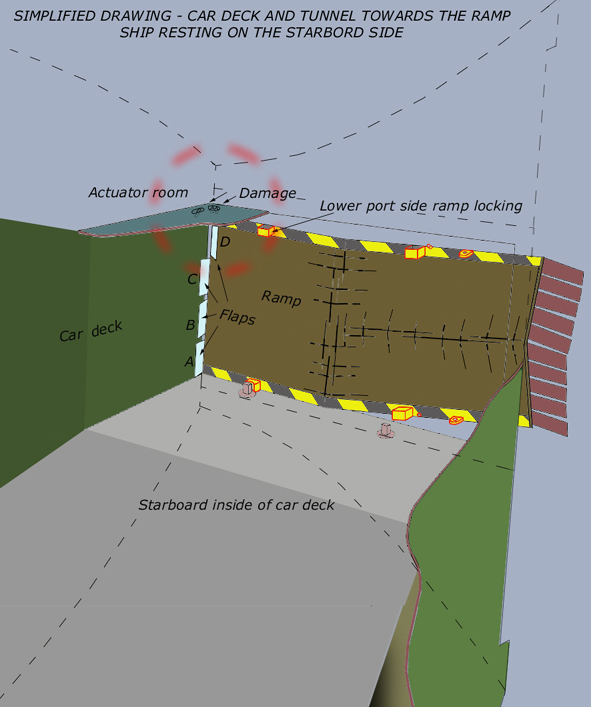
Picture 2. The diver follows the flaps A, B, C and D by holding on to them when he swims up towards the port inside of the car deck.
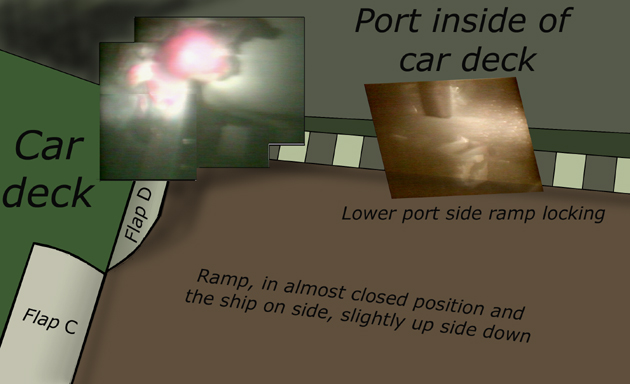
Picture 3. The port side of the ramp, the car deck and two of those flaps that covers the gap between the ramp and the deck.
When the diver get up to the "upper flap" he look to the right along the side of the ramp (yellow and black stripes) and then he turns his head looking towards the left high up. It is in this sequence the remarkable truth what really happened at the car deck is reveled. The pictures tell us as follows.
1. There are several half meter large holes blown up from the actuator room in to the car deck on the port side. The plating is torn in characteristic metal petal shapes typical from an explosion.
2. The petal shaped damage from at least one hole has locked the flap (D) in a position lifted from the normal position against the car deck. The contour from flap D is seen disappear behind the damage. If this damage had been caused when the ship was in normal upright position the flap never could have been stuck lifted from the car deck.
As the ship is resting more than 90 degrees to the side it becomes natural that the flaps turn out from the car deck by gravity and this is also the fact that proves that this damage has occurred from detonations after the ship had sunk.
In picture 4 below we have inverted the part of the picture showing the damage so that it easier can be seen how the plating has been shaped and locked the flap D.
In picture 5 we have drawn the contour of flap D locked by the damage.

Picture 4. Picture showing the damage inverted.
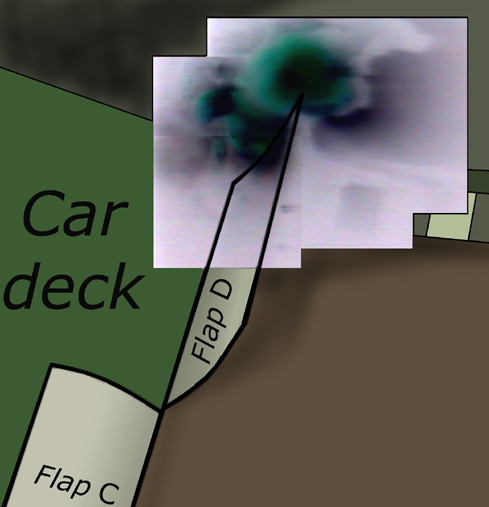
Picture 5. Picture showing the damage inverted and the flap D filled in
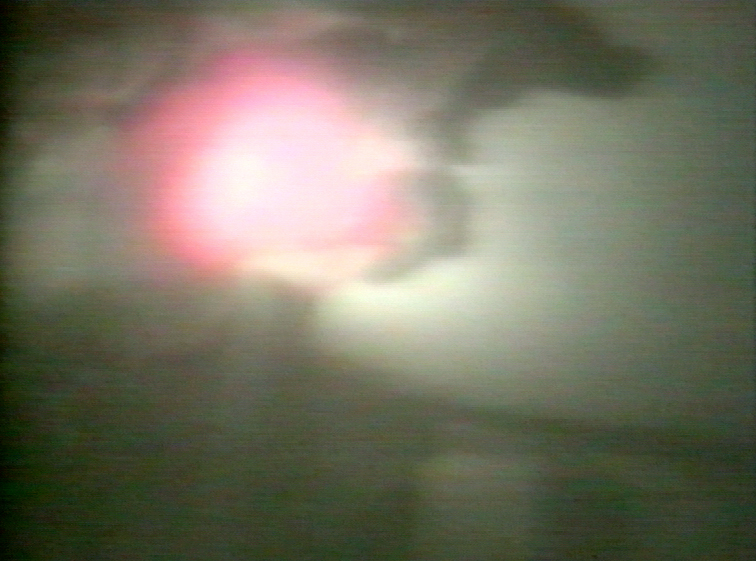
Picture 6. Close up of the damage locking the flap D.
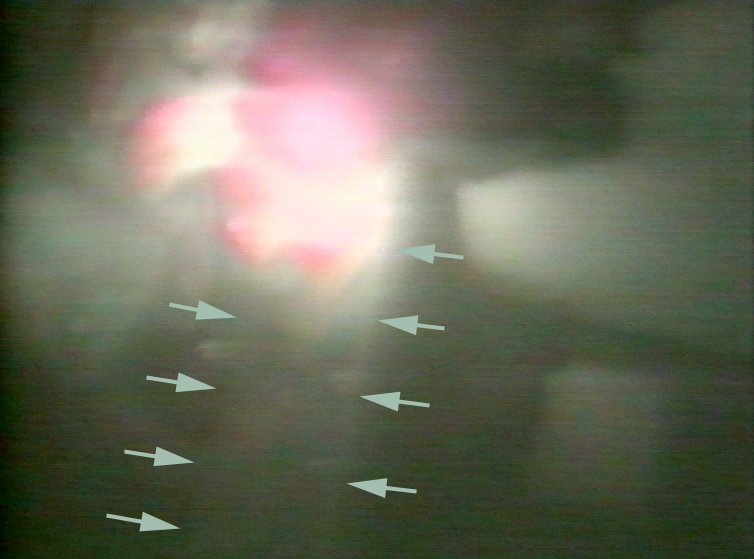
Picture 7. The flap is seen between the arrows and disappearing up behind the damage.
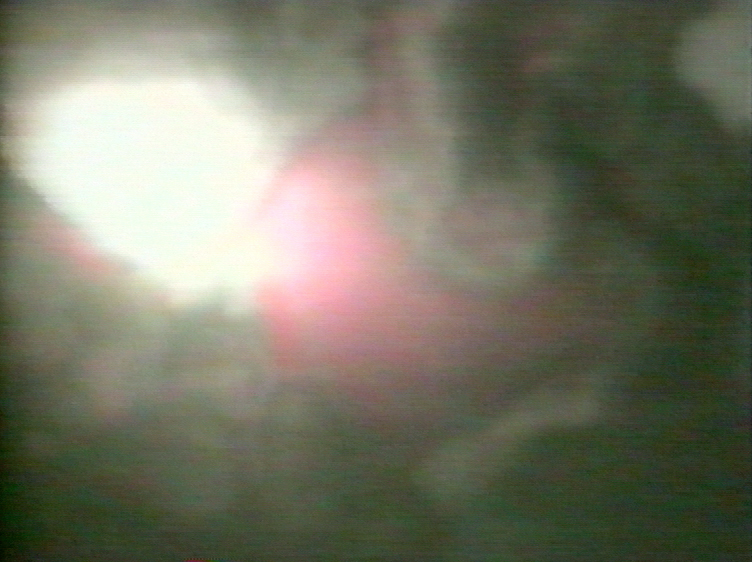
Picture 8. Close up of petal plating and hole in the bulkhead in to the actuator room on the port side.

Picture 9. Close up of of the same petal plating and hole in the bulkhead slightly further to the left.
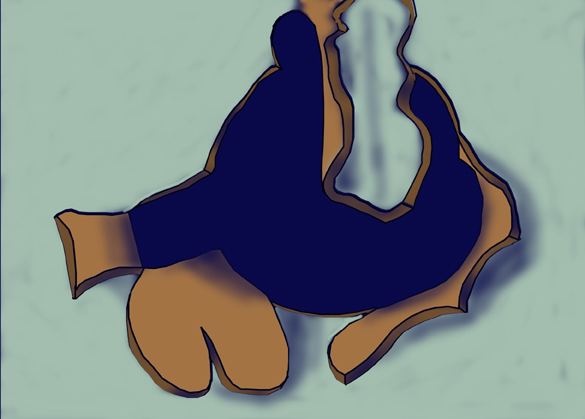
Picture 10. Approximate drawing of the damage, made from analyses of a number of pictures in the video sequence.

Picture 11. The last view of the damage show a number of balks that have penetrated the bulkhead seen sticking out together with other debris.
Link to
the video "SHK B40C" time: 1:34_(QuickTime)
Conclusion
The Independent Fact Group find that damage from explosions on the car deck are documented by JAIC and their own divers and that those damages never have been official or explained. We also find that the damage are such that never can occurred and locked at least one flap in a position only possible when the ship list more than 90 degrees from it's normal upright position. The explosions causing the damage must have taken place after the disaster.
We also find that divers that seen, documented and investigated the damage have been silenced by secrecy agreement made with the Swedish National Maritime Administration.
DEDICATION
We dedicate this report to all those who lost their lives at sea as a result of a ships lack of seaworthiness.
If MV Estonia had been seaworthy many of the more than 850 persons who lost their lives would have had a chance to survive.
Troon, Scotland 9 April 2006